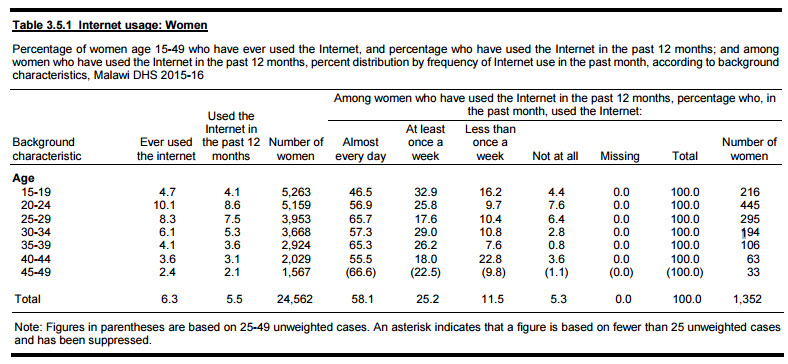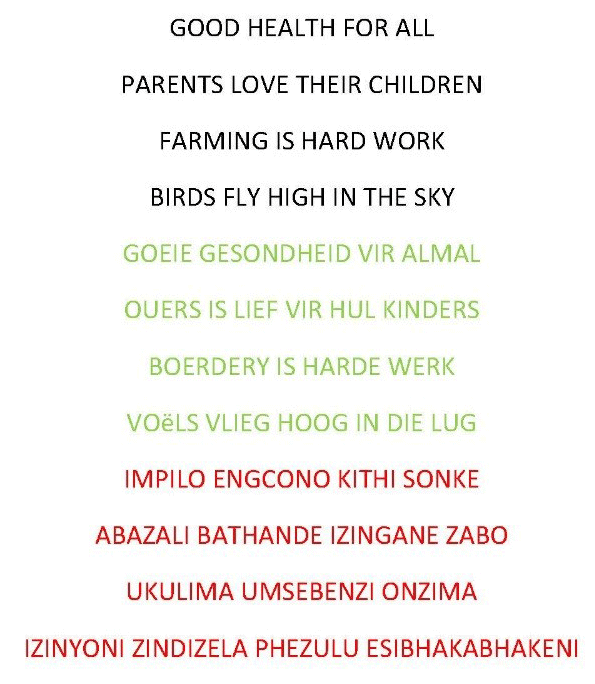New Data Available from DHS-7 Questionnaire: Literacy, Ownership of Goods, Internet Use, Finances, and Tobacco Use
This is Part 3 in the DHS-7 questionnaire blog series that explores the new data that are available in DHS reports resulting from changes made to the DHS questionnaires in 2014. This week’s post focuses on changes made to gather additional information about DHS respondents.
Part 3: Respondents’ Characteristics
Understanding DHS survey respondents is critical to interpreting DHS data. In addition to fertility and health data, the DHS captures information on education and literacy; exposure to mass media; ownership of goods, homes, and land; employment; and use of tobacco. Some of these topics are tabulated in Chapter 3 on Respondent Characteristics, while others are discussed in the chapter on Women’s Empowerment. Changes to these topics are outlined below.
More precise collection of literacy data. In previous DHS surveys, women and men who had attended at least some secondary education were assumed to be literate and only those with primary education and below were asked to read a card in their local language to test for literacy. In DHS-7, only those who have gone to “higher than secondary school” are assumed to be literate; all others, including those who have attended or completed secondary school, are asked to read the literacy card (pictured right).
Why? This change was made to improve the precision of literacy measures. Not all people who have attended some secondary school are literate. In some cases, this confirmation of literacy may also point to a misclassification of educational levels of respondents.
Implications: In some countries, this change may affect the interpretation of trends, as a more inclusive group of respondents is actually being tested for literacy in DHS-7 surveys. Recently released surveys do not suggest a major impact, however. In the 2015-16 Malawi DHS, for example, 72% of women were found to be literate (when women with primary, secondary, or secondary completed were asked to read the card). This includes about 40 female respondents (out of over 24,000) with some secondary education who previously would have been assumed to be literate but were identified in the 2015-16 survey as illiterate because they could not read the card. This more precise measure adjusts the national literacy rate in Malawi by only 0.15%; both methodologies result in a 72% literacy rate at the national level.
Additional questions on mobile phone ownership. Previous DHS surveys collected data on mobile phone ownership at the household level. In DHS-7, women and men are asked about mobile phone ownership individually. These data are presented in the Women’s Empowerment chapter.
 Why? Having one mobile phone per household is not very informative when programs are designing mobile interventions to reach pregnant women or facilitate receiving HIV results.
Why? Having one mobile phone per household is not very informative when programs are designing mobile interventions to reach pregnant women or facilitate receiving HIV results.
New finance-related questions. In DHS-7, women and men are now asked whether or not they have used their mobile phone for financial transactions, and whether or not they have an account in a bank or other financial institute. These data are tabulated in the Women’s Empowerment chapter.
New question on internet usage. Respondents to woman’s and man’s questionnaires are now asked if they have ever used the internet. Those who answer yes are asked if they’ve used the internet in the past 12 months. For those who have used the internet in the year before the survey, they are also asked, “during the last month, how often did you use the internet?” New question on ownership of title or deed for house or land. Previously, women and men were asked if they owned a house or land alone or jointly. Now they are asked two follow-up questions if they say yes to the ownership questions: whether or not they have a title deed, and whether or not their name is on the title deed. These data are tabulated in the Women’s Empowerment chapter. Because these questions may be considered sensitive not all countries will elect to include them in their surveys.
New question on ownership of title or deed for house or land. Previously, women and men were asked if they owned a house or land alone or jointly. Now they are asked two follow-up questions if they say yes to the ownership questions: whether or not they have a title deed, and whether or not their name is on the title deed. These data are tabulated in the Women’s Empowerment chapter. Because these questions may be considered sensitive not all countries will elect to include them in their surveys.
New and more detailed questions on tobacco use. In DHS-7, women and men are asked more detailed questions about tobacco use to capture how often the respondent smokes or uses other tobacco products. Men are also asked whether they have previously been a daily smoker, how many of different types of tobacco products are used per day and per week, and whether or not the man uses smokeless tobacco.
To learn more, read the full blog series or download the DHS-7 model questionnaire.



Proud of you DHS team